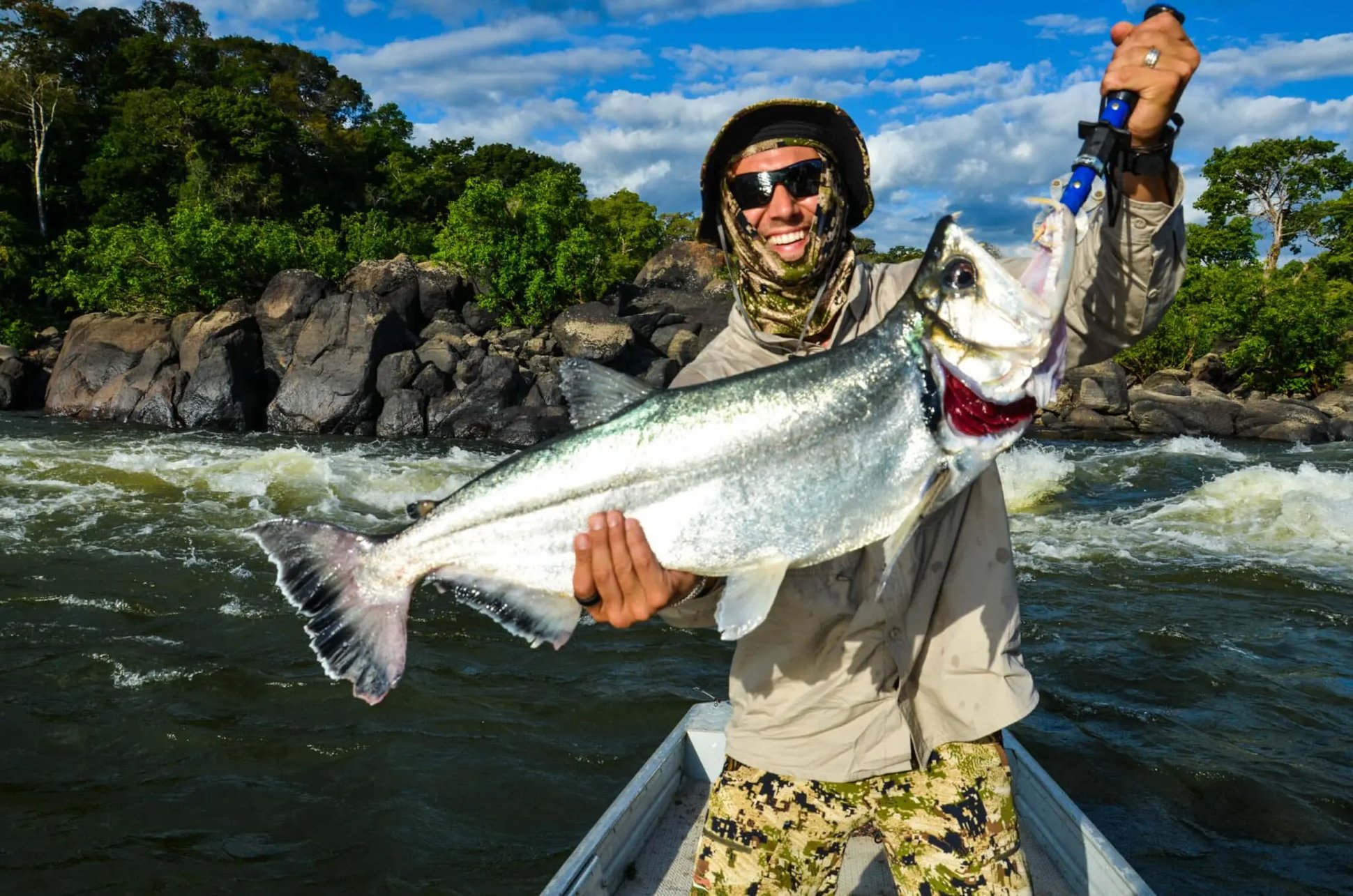The Amazon – magnificent and menacing – flowing for more than 4,000 miles, plowed through the jungle canopy 15,000 feet below me. Our single-engine Cessna Caravan bounced through the clouds as turbulent skies tossed the plane like a toy on our journey to a distant jungle runway.
The Amazon River is the largest river on the planet, carrying one fifth of the earth’s fresh water. Surrounding it are thousands of miles of impassable jungle spanning nine countries; almost the size of the continental United States. It is still one of the last places on earth to be fully explored. For biologists, it is an unparalleled paradise; for the explorer it is the ultimate adventure; and for the angler, it is a paramount fishery. As I peered down from the window of the plane, I wondered to myself what was in store for my stay on the “River of Doubt” or as it is now called, the Roosevelt River – a tributary to the Amazon.
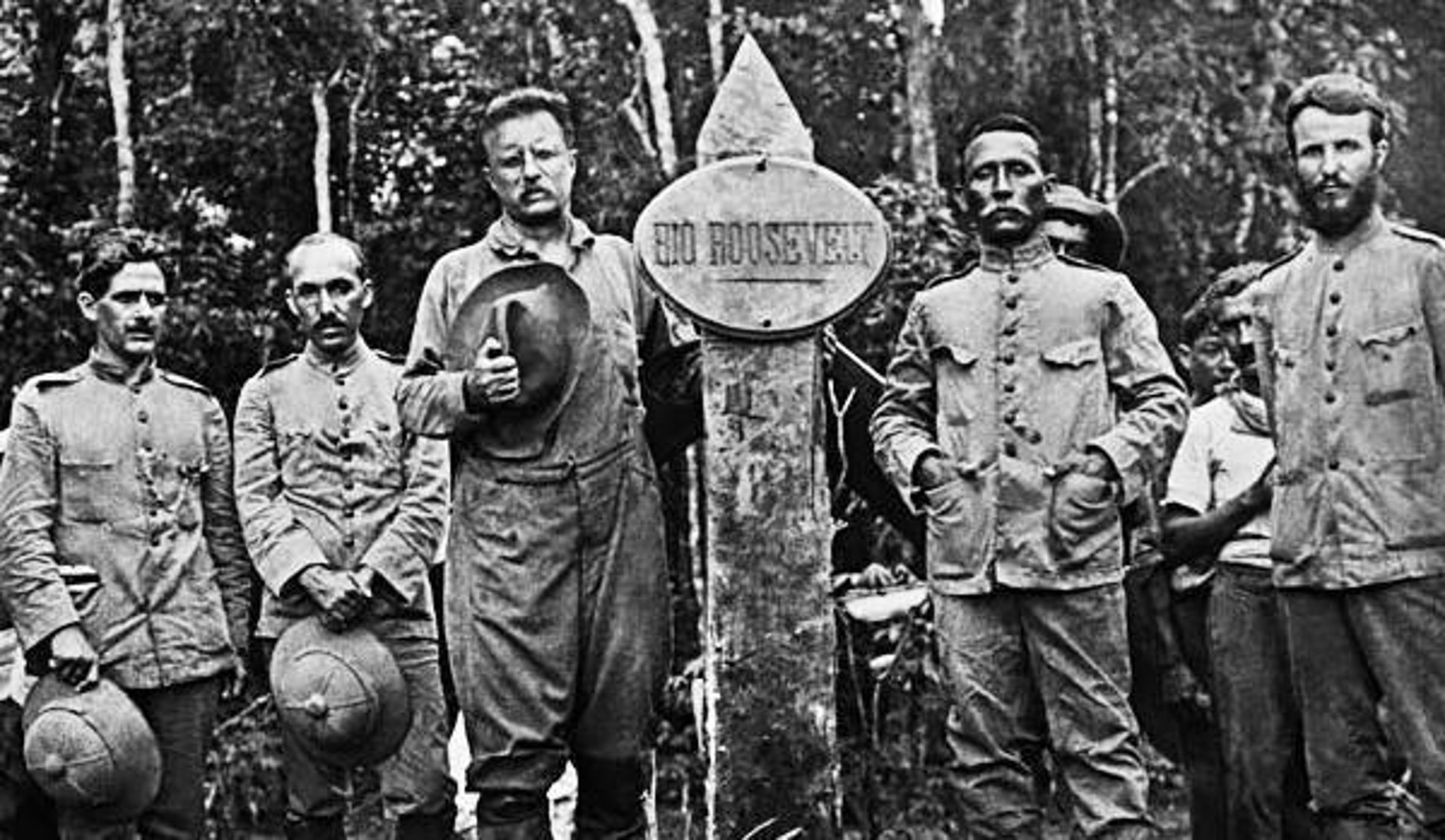
From 1913 to 1914, Theodore Roosevelt and Cândido Rondon were the first to explore the 1,000-mile stretch of river. The Brazilian government asked that Roosevelt accompany the famous Brazilian explorer Cândido Rondon on his exploration of the previously unknown “River of Doubt,” the headwaters of which, at that time, had only recently been discovered. Roosevelt, seeking adventure and challenge, agreed. Beginning in the jungles of Paraguay, the explorers fought their way through the jungle under the constant threat of attacks by indigenous peoples, malaria, and the ever-present dangers of wildlife. They reached the River of Doubt in February of 1914. After several more weeks traveling downstream, the party reached its destination. The expedition, though with its challenges, was considered a success. One thousand miles of previously unknown river were added to the map, countless mammal, plants and insect samples were collected, and another legend was born.
I felt a connection to this destination. There is just something that is intriguing to me about standing in the footprints of great Americans like Theodore Roosevelt. The lure of this legend called me to the former location of his camp over 100 years later … that, and the promise of great fishing, of course.
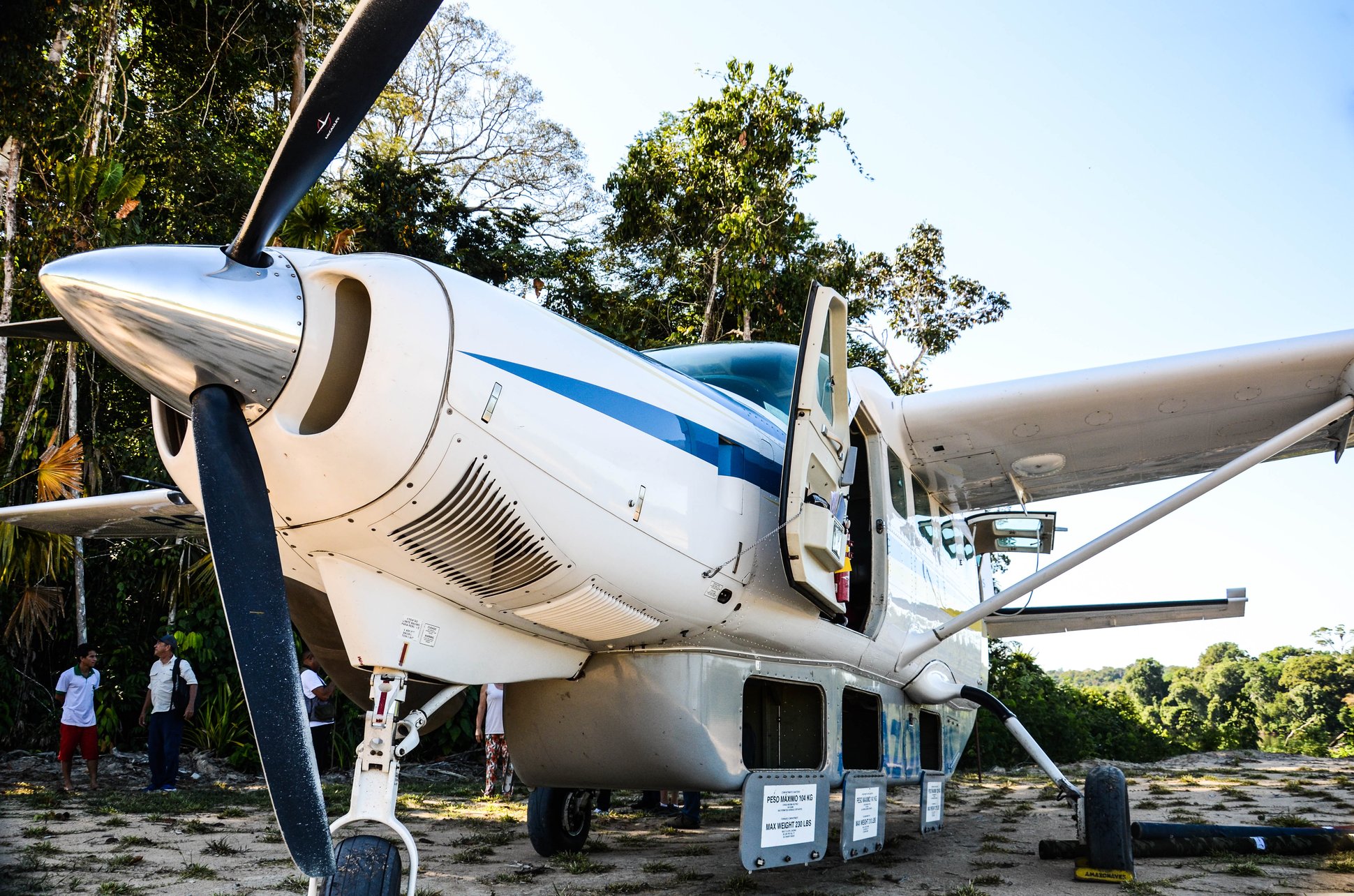
As we made our landing approach, we banked to the left and with that turn, a long dirt runway became visible along side the river. My heart raced and I was overcome with a sense of adventure. As we touched down I could feel the wheels meeting loose rocks on the runway and watched the dust swirl around us as we came to a stop. We were greeted with big smiles and excited waves from the local residents of the camp. Supplies were limited there – only transported in for the most part by arriving anglers in the cargo holds of their planes. The steady flow of guests allowed the camp to exist and, when necessary, the locals would truck in supplies by way of the Trans-Amazon highway – a rugged two-lane dirt road in that region. As for the rations, the jungle provided a bounty of produce and the river, endless fish to eat.
After we unloaded our gear and the camp’s supplies, we bid farewell to our captain. The plane taxied down the runway and upon take off, it hit me, we were now cut off from civilization, hundreds of miles from the nearest city, and reliant upon our hosts and our own efforts as outdoorsman to make the most of our adventure.
This was a special trip beyond the inherent nature of its exotic location. This journey, these new friends, and this adventure would have not been possible if it were not for Leo Madeira – or to me, Uncle Leo. This was Leo’s passion: fishing the Amazon, being one with the jungle, and sharing his culture with others. You could see the smile on his face, ear-to-ear.
“There it is John, the Amazon River!” he exclaimed. “You are in for a real treat here – oh, it’s so good to be back.” I was the first of the family to experience the jungle with Uncle Leo, who is now later in his life and living in South Carolina. Most of my family has no interest in ever traveling to parts unknown with Leo – it’s just not their thing, but for me it was everything.
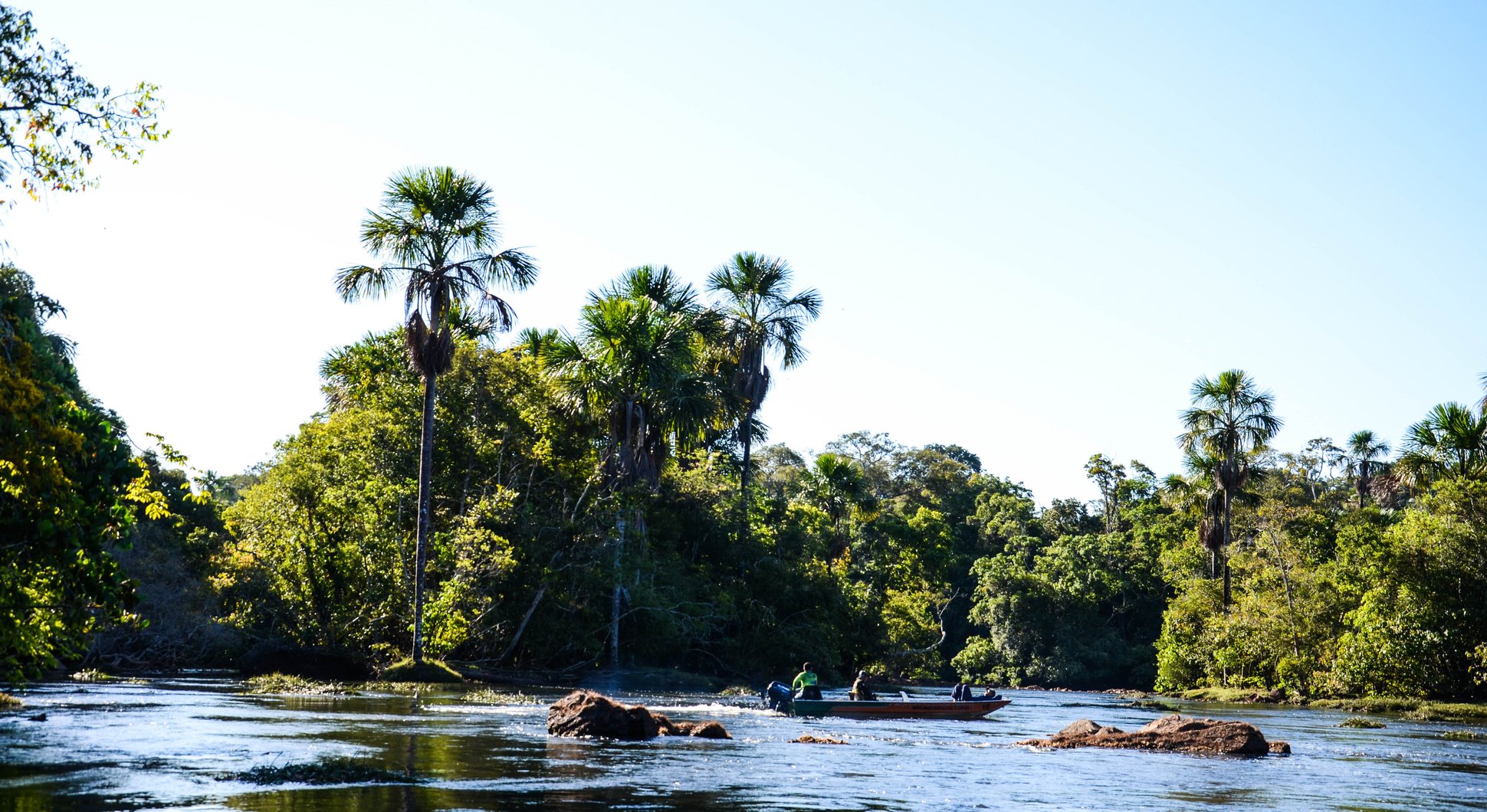
The next morning we awoke before sunrise. The jungle just was beginning to wake up too, with calls of exotic birds, the chirps of crickets being replaced by the buzz of cicadas, and the chatter of our accompanying anglers could be heard from the main lodge. After some very strong and intensely sweet Brazilian coffee, we headed down to the river for our first shoreline view. Low light and long shadows stretched along the glassy surface of the water as the sun rose. With each minute that passed, more and more of the majesty of the Amazon could be observed. We climbed into our boats with our local guide as the early morning fog rolled off the canopy providing a feeling that could only be described as heavenly. I picture this would be the scene at the Pearly Gates: billowing clouds of pure white descending upon us, mist rising off of the soft water below us; both enveloping the boat in a cool and calming moisture illuminated softly by the rising sun. But as the morning heated up, this scene burned off and revealed greenery like I have never seen before. A mixture of palms, Sumaumeira and Rubber trees surrounded us, alive with life. Toucans soared between the trees and the calls of monkeys let us know we were not alone.
We tied the boat off to a tree growing from the rocks at the headwaters of some light rapids. There we began to cast live bait. Right off, I began to get nibbles, more nibbles, and even more nibbles. The pole was almost vibrating, but as quickly as the bites started, they ended. I reeled in quickly to check my bait only to discover it was gone. I had just met my nemesis – piranhas. Throughout the trip they would continuously consume my bait, but over time and with experience I learned where to cast to better avoid them and also how to distinguish their buzzsaw-like nibbles from the interest of the larger fish for which we searched.
Casting for nearly 30 minutes into the edges of the rapids, I finally experienced the strike I was anticipating. A heavy hit that jerked me forward. Fighting and jumping, the fish ripped line from the spool of my reel. After several minutes I had the fish under my control and near the boat. I caught my first river monster – a 20-plus pound Payara, or as they are more commonly called, a “Vampire Fish.” This fish was on my bucket list of fish to be caught ever since I first learned of them while watching Jeremy Wade of the show “River Monsters” fish these same waters. With fangs hinged up from its bottom jaw like daggers, this fish is one of the top predators in the Amazon. Throughout the day we caught several more Payaras, none less exciting than the one before.
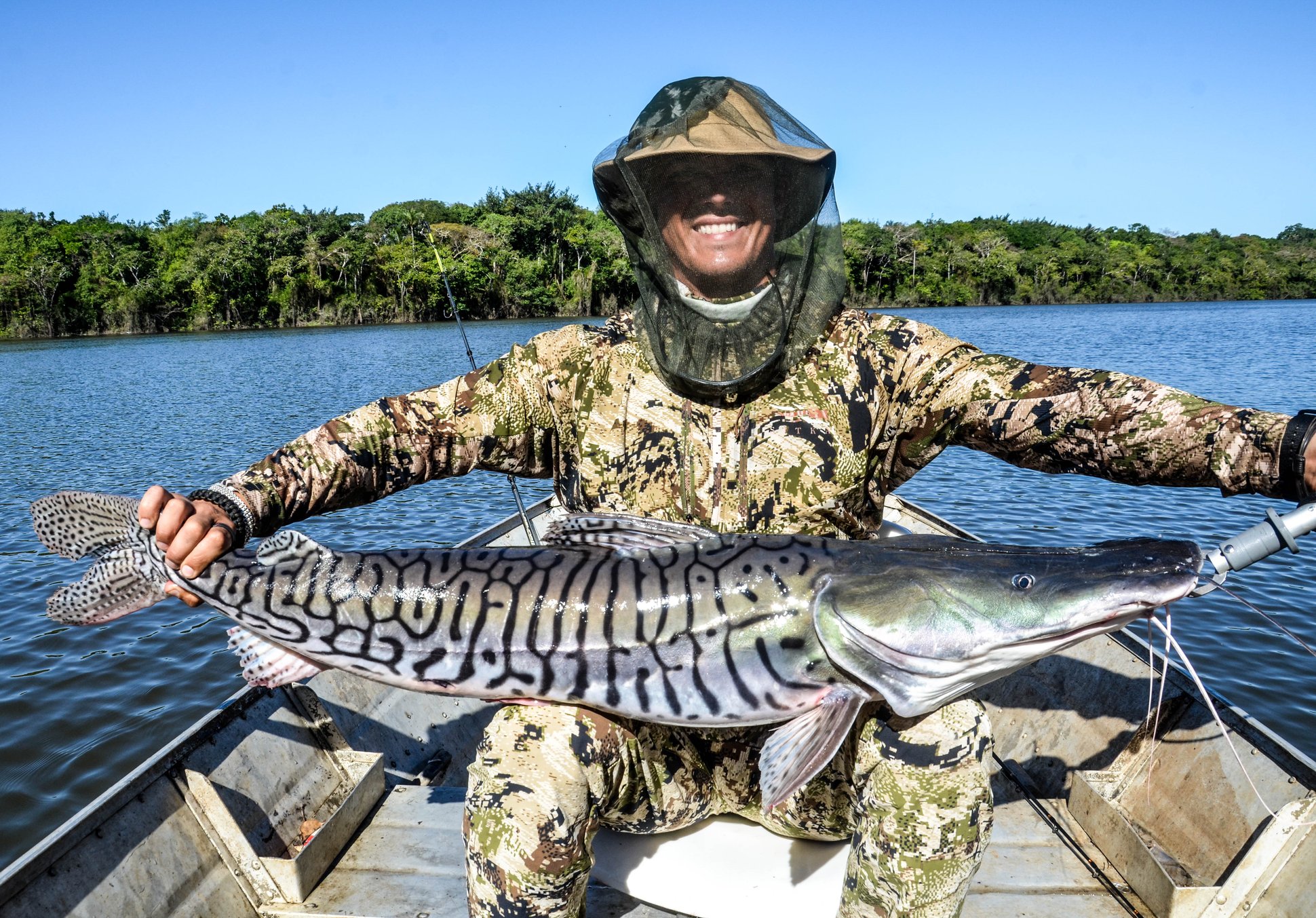
Later, during my time in the jungle, we embarked upon a 4-hour boat ride to our destination. Coming ashore I looked to our guide for direction. Direction was quite hard to come about – our guide only spoke Portuguese and my interpreter, Uncle Leo, was slowly, but surely, returning to his native tongue as well. I took my queues from our guide’s gestures and soon realized that we were repeating a plight that Theodore Roosevelt endured so many years prior – called a “portage.” We carried the boats, all of our gear, and our supplies through the jungle, up a hill and down the other side to a now land-locked back channel formed by the receding waters during the dry season. Within it lived several species including the Amazon’s apex predator – the Arapaima, also known as the Pirarucu. We tried all day to hook into one, but to no avail. The piranhas proved to be too much for us, consuming our bait tirelessly. Towards the end of the afternoon, as we gave catching the giant fish a last effort; my heavy tackle line began to tick. I knew it was not a piranha this time. Setting the hook, the fight began. Heaving back and forth, I fought the giant for over 10 minutes. It pulled the boat towards the middle of the lagoon. As the fish arose from the murky water, I quickly realized it was not a Pirarucu but rather a species of catfish known as a Cachara. It was a beautiful fish adorned with almost zebra-like qualities. Weighing well over forty pounds, the fish was the largest caught during the trip.
When it comes to the Amazon though, one fish in particular is on every angler’s list – the Peacock Bass or “Tucunare” as it is called by the locals. The Roosevelt River and its many back channels are full of them, though not quite as large in size as other areas of the Amazon. The Roosevelt River is home to over thirty species of fish and the trade for a more diverse list of fish to catch was an easy trade-off for me when it came to the overall size of the Peacock Bass in the area. On several days of my trip, we found ourselves in Peacock Bass-rich waters. Several were caught. Their vibrant colors were some of the most stunning of any fish I have caught in my lifetime. They give a great fight, but I would urge others to consider the diversity of species when planning a trip to the Amazon over just one larger species. The Roosevelt River’s depths are home to unseen monsters that will leave you in awe when caught. The trade-off is well worth it.
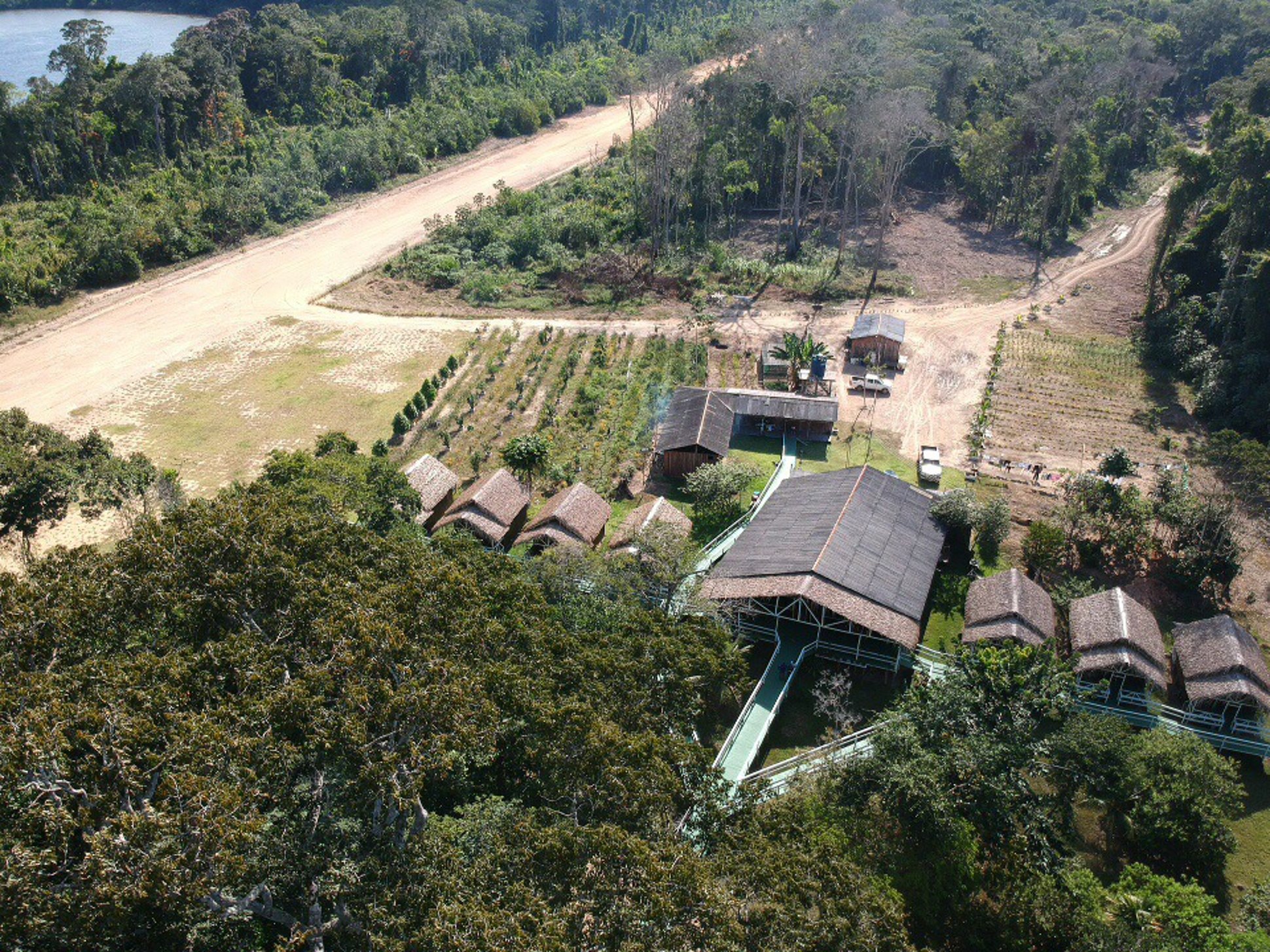
There are several ways to experience fishing the Amazon. I chose a more rugged approach. I wanted the real experience, the local interaction, and the jungle culture and cuisine. Though our lodge was isolated; reliant upon diesel generators for power, with no cell phone communication and satellite internet only, it was accommodating and made for a truly Amazonian experience. There weren’t many frills, but for Uncle Leo and me, it was perfect. It was our “River of Doubt” expedition and we, too, survived to tell the story. We bonded over the adventure, laughed over ice-cold caipirinhas, hooked into fish most can only dream about, and returned home with a larger-than-life fish tale that we can and will recount for years to come. And for that, I wouldn’t trade all the fish in the Amazon.
Visit amazonroosevelt.com.br to book your Amazon adventure on the Roosevelt River.
[]
